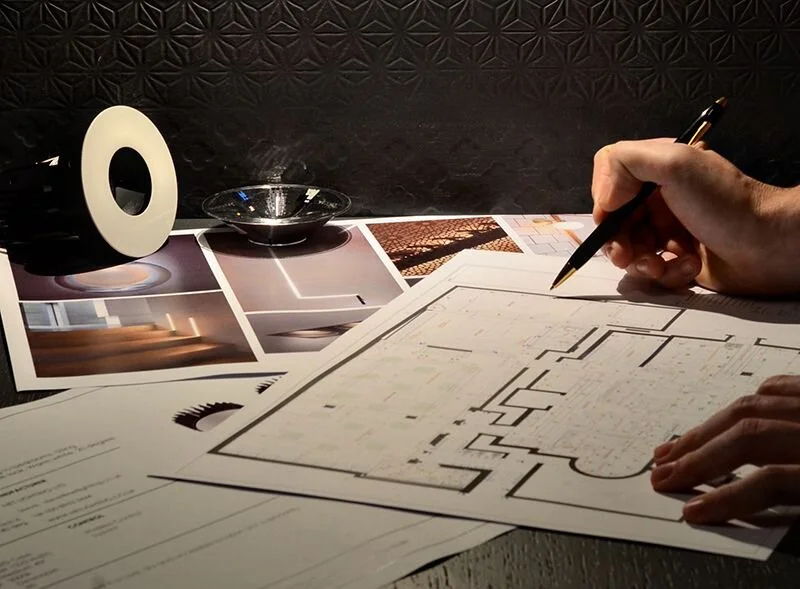What happens when you appoint us on a project?
Starting the project
First of all we meet you either in person or via zoom! We discuss your project and what you hope to achieve with the lighting design. We will look at the building, how you plan to use the spaces and find out as much as possible about your interior design tastes and everything from floor and wall finishes to proposed furniture placement. Most clients find this really helpful as it starts to focus their minds on how they will enjoy their homes and identifies the decisions they need to make and the timescale.
Developing the Ideas
We then either have a look around the building if there is something to see or look at the architect’s drawings which initiates the design process from which lighting ideas develop. This is usually a very collaborative process and we will show you mood images and pictures of other projects for your feedback and to demonstrate the lighting effects planned.
First Drawings
A lighting concept plan is prepared and drawn onto a CAD underlay from the architect, interior designer or landscape designer. This is supported with pictures of the proposed lighting effects, types of light fittings and photographs of other projects to convey the look and feel. We will meet with the client to present the ideas and take on board feedback.
Developing the Lighting Design
As the project progresses more information will become available including kitchen design, bathroom design, interior finishes and fixtures, where pictures are going, special features and joinery. This all informs the lighting design and the lighting scheme develops. Changes to the architecture and further interior details will be taken on board.
Detailed Design
Once the design is pretty much fixed more detailed information is produced. Final drawings showing setting out dimensions and dimming / switching groups will be provided. Control schedules are necessary for wiring and will show how lighting is dimmed or switched in groups. If a lighting control system and/or home automation is proposed then detailed lighting control information and drawings need to be sent to the specialist suppliers/installers so they can quote for and design the system. Where light fittings have remote drivers the electrical contractor will need to consider where these are located and how they are accessed. Lighting details for example coves, coffers, lighting slots and joinery details will be sketched up to ensure the lighting design is fully co-ordinated by others.
Decorative Lighting
Decorative lighting which is typically light fittings that self illuminate should be selected at this stage by the client and interior designer if appointed. Usually decorative fittings do not provide much functional light and therefore necessary supplementary architectural light fittings i.e downlights/spotlights are added if necessary to meet functional lighting requirements. . Decorative light should glow beautifully and softly and should never be so bright that they become uncomfortable to look at.
Specification
At detail design stage, final decisions with regards to the quality, quantity, colour appearance, dimming characteristic and glare control have to be made. The final specification of lighting products is made and will take into account any site constraints, ceiling and recess depths, appropriate fire rating and IP rating in wet areas. The available budget will to a large extent inform the selection. A balance has to be struck between quality and budget. The specification is a fundamental part of the lighting design and will have been considered at every stage of the project.
On Site
On some smaller projects our involvement finishes at the end of Detail Design. However we are always available to help answer any questions that the electrical contractor may have with regards to the design and specification. We can visit site to check on progress say for example before first and second fix electrical and make changes if necessary due to on site constraints. If the lighting has a control system we will usually spend time (usually late at night in the summer!) with the control system programmer setting up lighting scenes.



